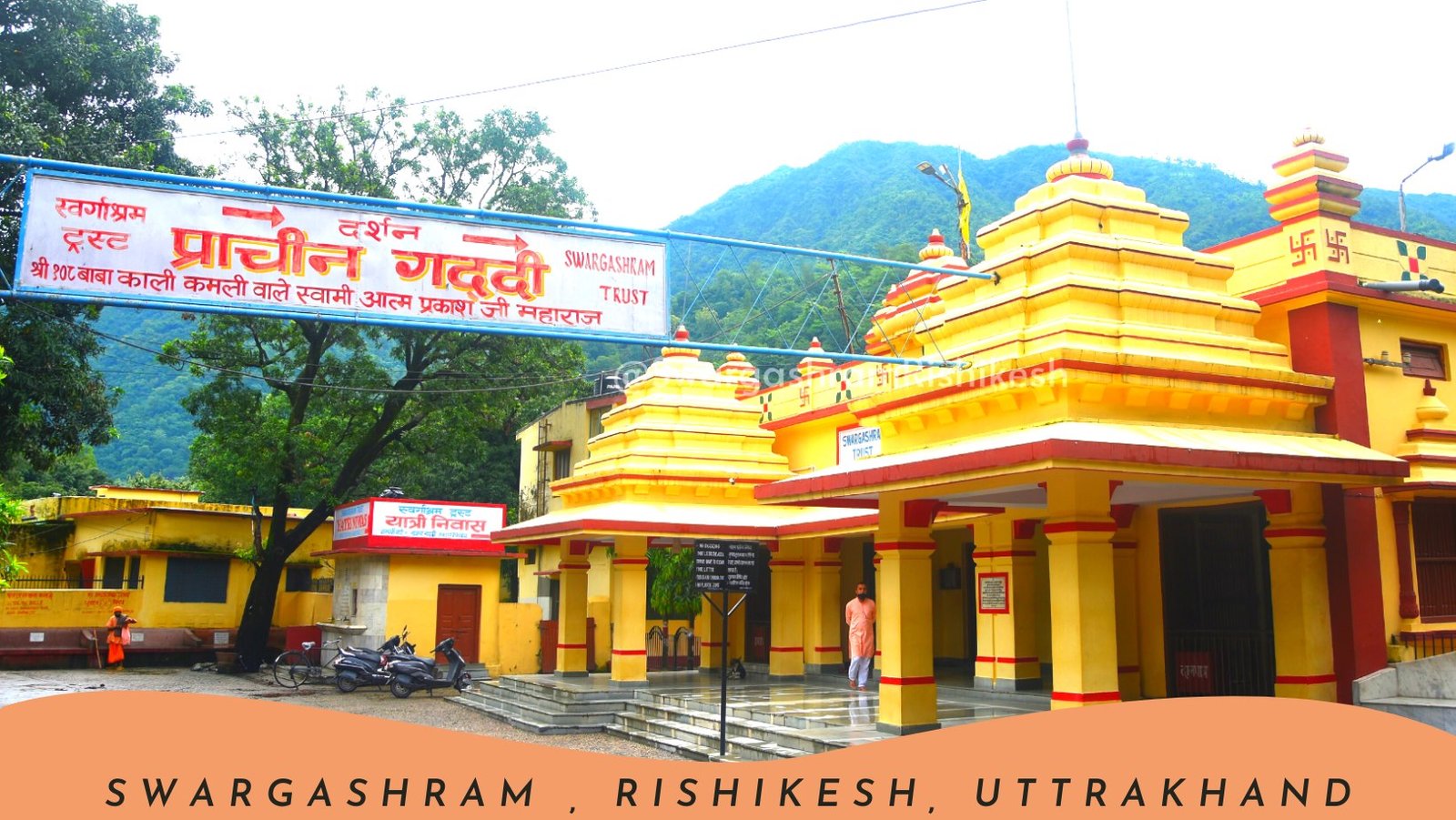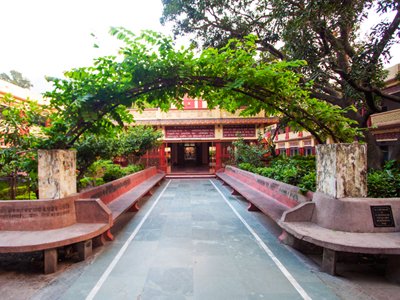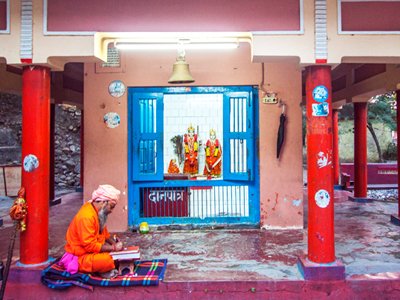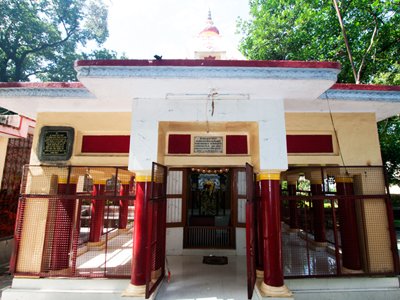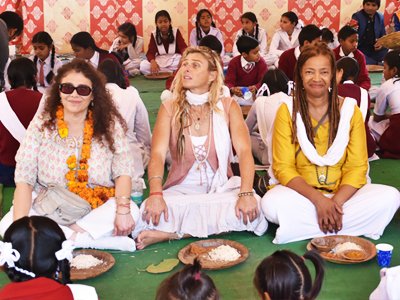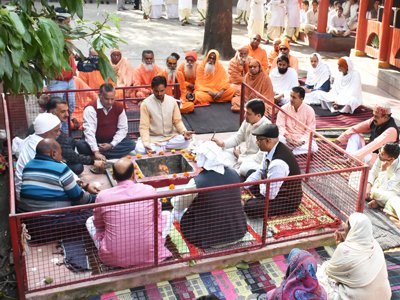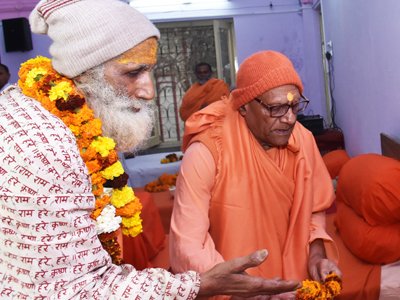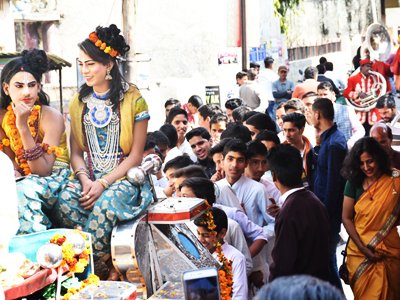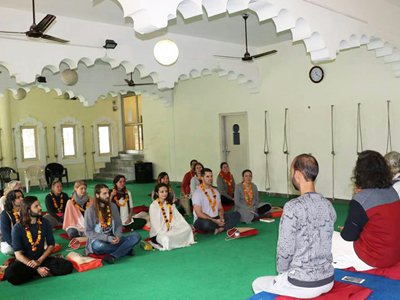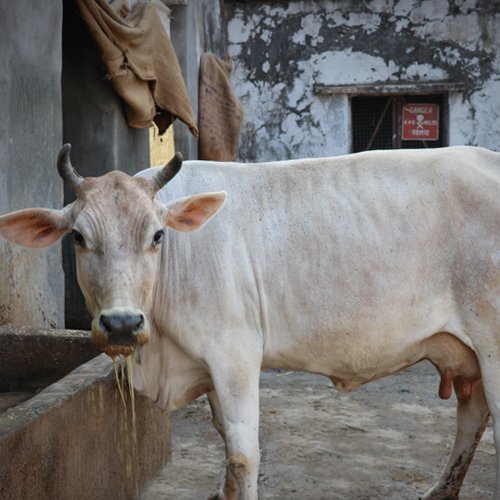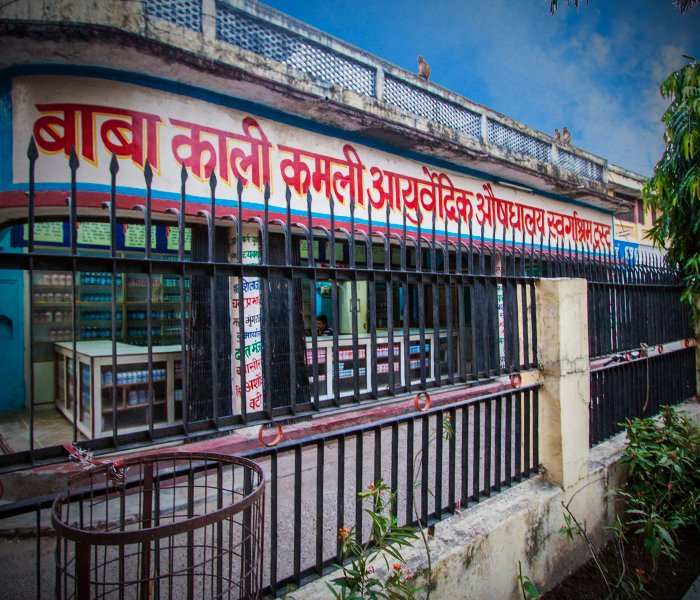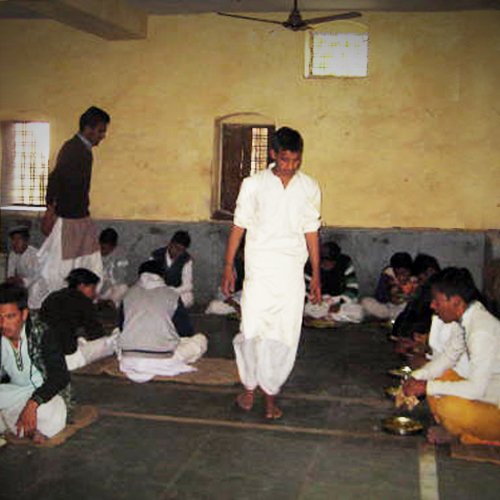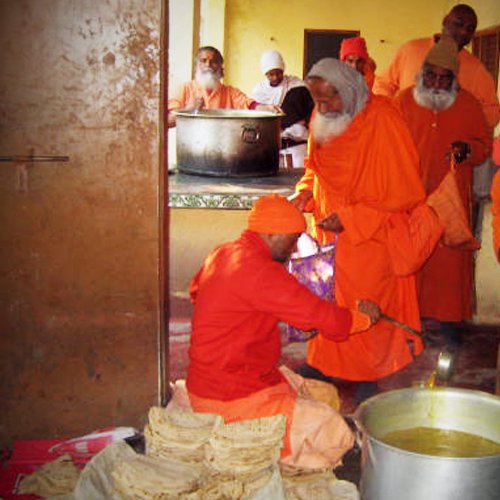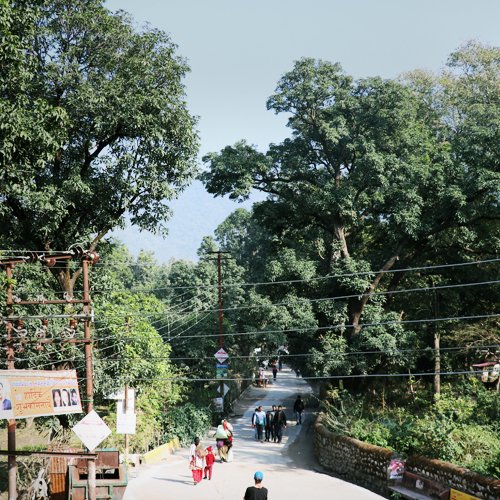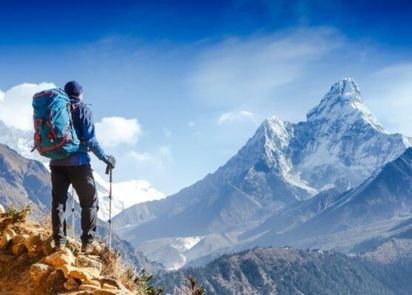Gaushala
Swargashram has a well built gaushala to take care of a large number of cows .Our West-influenced intellectuals sneer at the mention of the cow. The same intellectuals first sneered at yoga. Now it is a fashion to do pranayama at cocktail parties. The arguments in the West for cow slaughter are no more uncontested. They also sneered at our sanyasis as `godmen’. Now they flock to ashrams with their white friends ever since the Beatles. Who knows, they may soon have a cow in their backyards.
India has 150 million cows, each of them giving an average of less than 200 litres of milk per year. If they could be fed and looked after, they can give 11,000 litres. That would provide milk for the whole world. The milk we produce today is the cheapest in the world.For those of us who are desi by pedigree and conviction, I place some facts about the cow in the perspective of modern Hindutva.
The cow was elevated to divinity in the Rig Veda. In Book VI, Hymn XXVIII attributed to Rishi Bhardwaja extols the virtue of the cow. In Atharva Veda (Book X, Hymn X), the cow is formally designated as Vishnu, and `all that the Sun surveys’.Indian society has addressed the cow as gomata. The Churning of the Sea episode brings to light the story of the creation of the cow. Five divine Kamadhenus (wish cows), viz. Nanda, Subhadra, Surabhi, Sushila, Bahula emerged in the churning.Thousands of names in our country are cow-related: Gauhati, Gorakhpur, Goa, Godhra, Gondiya, Godavari, Goverdhan, Gautam, Gomukh, Gokarna, Goyal, Gochar etc.They signify reverence for the cow, and our abiding faith that the cow is Annapurna.
In 2003, the National Commission on Cattle under Justice G. M. Lodha submitted its recommendations to the NDA government. The report called for stringent laws to protect the cow and its progeny in the interest of the rural economy, a constitutional requirement under Directive Principles of State Policy. Article 48 of the Constitution says: `The State shall endeavour to organize agriculture and animal husbandry on modern and scientific lines and shall, in particular, take steps for preserving and improving the breeds, and prohibiting the slaughter of cows and calves and other milch and draught cattle’. During the First War of Independence in 1857, when Bahadur Shah `Zafar’ was installed as emperor by the Hindus in Delhi for a brief period, his Hindu prime minister, on the emperor’s proclamation, made cow killing a capital offence. In Maharaja Ranjit Singh’s kingdom, the only crime that invited capital punishment was cow slaughter.
The Importance of the Cow in Vedic Culture
The cow, according to the Vedas, provides four products for human use: (i) Godudha (cow milk): As per Ayurveda, cow milk has fat, carbohydrates, minerals and Vitamin B, and even a capacity for body resistance to radiation and for regenerating brain cells. (ii) Goghruta (ghee): The best ghee, it is, as per Ayurveda useful in many disorders. In yajna, it improves the air’s oxygen level. (iii) Gomutra (urine): Eight types of urine are used for medicinal purpose nowadays, among which cow urine is held to be the best. The Americans are busy patenting it. It has anti-cancer, anti-bacterial, anti-fungal and antioxidant properties.
It has immune-modulator properties, which makes it useful for immune deficiency diseases. In the classics there are many references to cow urine as a drug of choice. Even the Parsis follow this practice.Lastly, (iv), Gomaya (dung) is considered as valuable as Gomutra and used to purify the environment, as it has radium and checks radiation effects.Ancient Hindu wisdom on the medicinal properties of cow urine is borne out by two patents granted in the US for cow urine distillate (Patent numbers 6410059 and 6896907).Even China has granted the distillate a patent as a DNA protector. A global patent has been granted for cow urine, neem and garlic as a pest repellent and for fungicidal and growth promoting properties for different crops (WHO 2004/ 087618A1). A US patent has been granted for strains from Sahiwal cow milk for plant growth promoter phytopathogenic fungi controlling activity, abiotic stress tolerating capability, phosphaticsolubilisation capability, etc. And CSIR has filed for a US patent for amritpani, a mixture of cow dung, cow urine and jiggery, for soil health improvement properties.
These claims were initially made in the Charaka Samhita, Sushrut, Vaghbhati and Nighantu, Ratnakar, etc. They prove the utility of cow dung and urine for sustainable agriculture as well as for disease prevention.The arguments in the West for cow slaughter are no more uncontested. There are better sources of protein than beef. Any dietitian’s chart shows that beef with 22 per cent protein ranks below soya-bean (43), groundnut (31) and pulses (24 per cent). One kilogram of beef takes seven kg of crops and 7,000 kg of water to produce.
Thus cow protection makes economic and ecological sense. Swami Dayananda Saraswati, convener of the Hindu Dharma Acharya Sabha, has argued that non-vegetarianism indirectly contributes heavily to greenhouse gases and other pollution.He quotes a UN report from 2006 that says, “Raising animals for meat as food generates more greenhouse gases than all the cars and trucks in the world combined”. Ten of billions of animals farmed for food release gases such as methane, nitrous oxide and carbon dioxide through their massive amounts of manure. “The released methane”, the report says, “has 23 times the global warming potential of CO2″. For these animals to graze, virgin forests are cleared. The livestock industry also needs vast stretches of land to raise mono-crops to feed the animals. The CO2 that the trees and plants store escapes into the air when they are destroyed.
The Importance of the Cow in Vedic Culture
Growing fodder implies heavy use of synthetic fertilizers produced with fossil fuels.
While this process emits a huge amount of CO2, the fertilizer itself releases nitrous oxide (3) — a greenhouse gas that is 296 times more potent than CO2. Alarming though these facts are, all that people have to do is to avoid red meat. There will be no need to breed millions of animals for daily slaughter. The animal population will consequently decline.
A single individual by not consuming meat prevents the equivalent of 1.5 tonnes of CO2 emissions in a year. This is more than the one tonne of CO 2 prevented by switching from a large sedan to a small car.
So there are a number of reasons to be a vegetarian. People who eat meat think a pure vegetarian diet is optional. But now they have no choice if they are alive to what is happening to this life-bearing planet. There is no justification for eating meat, given the devastating consequences for the planet.
A new fervour for a cow renaissance is necessary. It is constitutional (for India) and we should defend it with all our might.
With all these aspects to keep in mind , our gaushala provides a well arranged infrastructure for the cows and provides them with the best quality of food and water to them .

